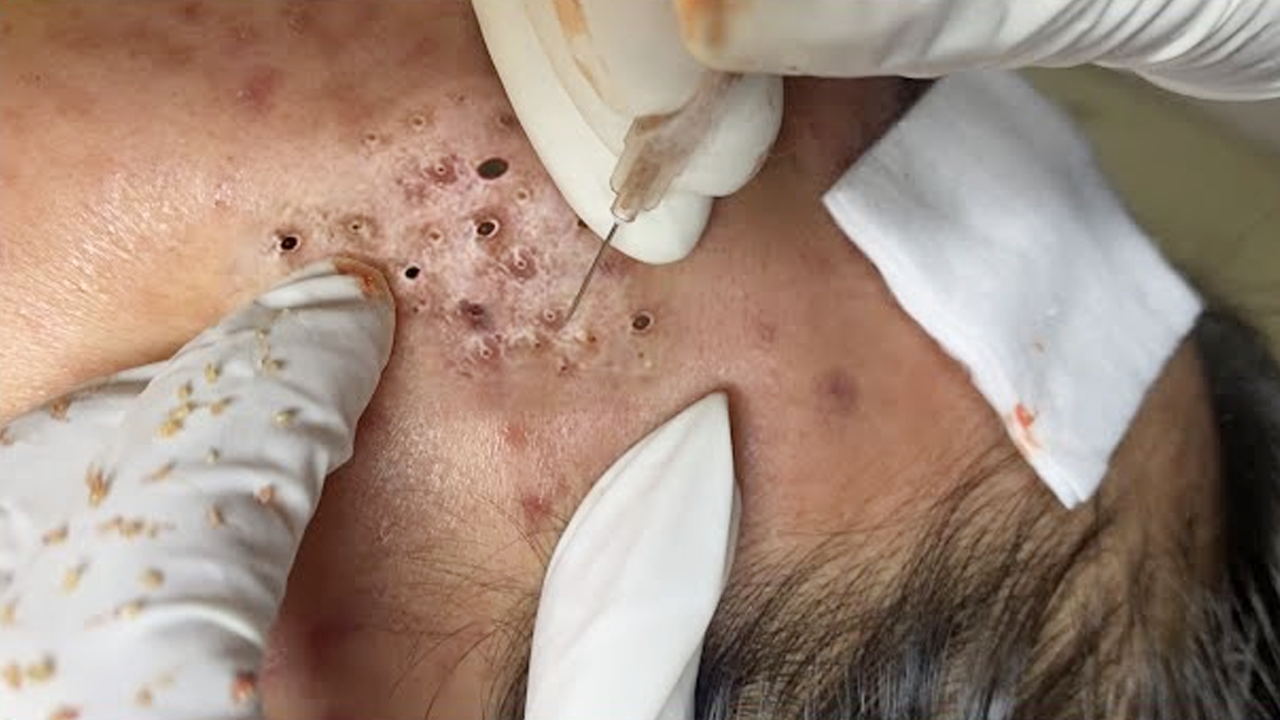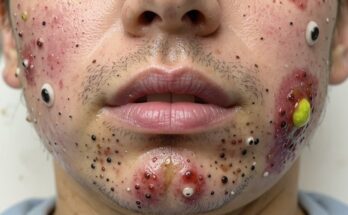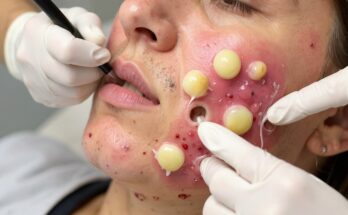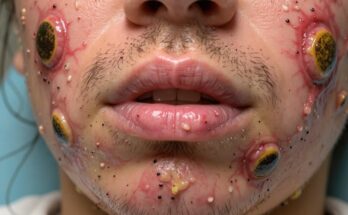Decoding Your Breakouts: Hormonal vs. Regular Acne
Are you battling blemishes but unsure whether they’re hormonal or simply regular acne? This comprehensive guide will help you differentiate between the two, understand their root causes, and discover effective treatment strategies for clearer, healthier skin.
Understanding the Two Types of Acne
Acne, that frustrating skin condition, isn’t a one-size-fits-all issue. Two distinct types exist, each requiring a unique approach to treatment: regular acne and hormonal acne. Misunderstanding the differences can lead to ineffective treatments and prolonged breakouts.
Regular Acne: The Basics
Regular acne, also known as non-hormonal or inflammatory acne, arises from a combination of factors impacting your pores. These factors often include:
- Clogged Pores: Excess oil, dead skin cells, and dirt accumulate, blocking pores.
- Bacterial Overgrowth: The bacteria Cutibacterium acnes thrives in these clogged pores, leading to inflammation.
- Inflammation: Your body’s immune response to the clogged pores and bacteria causes redness, swelling, and pimples.
- External Triggers: Diet, stress, improper skincare, and environmental factors can exacerbate the problem.
The hallmark signs of regular acne include:
- Blackheads and Whiteheads: These are non-inflammatory comedones.
- Red, Inflamed Pimples and Pustules: These are inflammatory lesions.
- Widespread Location: These blemishes can appear anywhere on the face, back, or chest.
Regular acne can affect teenagers and adults of all genders, often linked to puberty or lifestyle choices.
Hormonal Acne: A Deeper Dive
Hormonal acne, on the other hand, is primarily driven by fluctuations in hormone levels, particularly androgens like testosterone. These fluctuations directly impact sebum (oil) production, leading to:
- Increased Sebum Production: Excess oil clogs pores more easily.
- Inflammation and Breakouts: The resulting clogged pores trigger inflammation and breakouts.
- Specific Location: Hormonal acne frequently appears along the jawline, chin, and lower face.
This type of acne often presents as:
- Deep, Cystic Pimples: These are often painful and larger than typical pimples.
- Recurring Breakouts: Breakouts often worsen around menstruation, pregnancy, or menopause.
While it commonly affects women due to fluctuating hormone levels during their menstrual cycle, hormonal acne can also occur in men.
Effective Treatment Strategies
Choosing the right treatment depends heavily on identifying the type of acne you’re experiencing.
Treating Regular Acne
Addressing regular acne often involves a multi-pronged approach:
1. Skincare Routine Optimization
- Gentle Cleansing: Opt for a cleanser containing salicylic acid or benzoyl peroxide to unclog pores and kill bacteria.
- Targeted Treatments: Apply spot treatments containing benzoyl peroxide or salicylic acid directly to blemishes.
- Moisturization: Use a lightweight, non-comedogenic moisturizer to keep skin hydrated without clogging pores.
- Chemical Exfoliation: Incorporate a chemical exfoliant (like glycolic or lactic acid) 1-2 times per week to remove dead skin cells.
2. Lifestyle Adjustments
- Hygiene: Avoid touching your face frequently, and wash pillowcases and makeup brushes regularly.
- Stress Management: Stress can worsen acne; prioritize stress-reducing activities.
- Balanced Diet: A healthy diet can support overall skin health.
3. Over-the-Counter Solutions
Look for products containing salicylic acid, benzoyl peroxide, or retinoids.
Treating Hormonal Acne
Tackling hormonal acne requires a more comprehensive strategy, often involving both skincare and medical interventions:
1. Skincare Routine Tailoring
- Gentle Cleansing: Use a gentle, non-drying cleanser to avoid stripping the skin’s natural oils.
- Regulating Cell Turnover: Incorporate products containing retinoids (like adapalene) or azelaic acid to regulate cell turnover and reduce inflammation.
- Hydration: Use a hydrating, non-comedogenic moisturizer to maintain skin’s moisture barrier.
- Targeted Spot Treatments: Use products with sulfur or tea tree oil to address cystic breakouts.
2. Lifestyle Modifications
- Stress Reduction: Manage stress levels, as stress can exacerbate hormonal imbalances.
- Dietary Adjustments: Consider reducing sugar and dairy intake, as they are often linked to acne.
3. Prescription Treatments
For more severe cases, a dermatologist can prescribe:
- Topical Retinoids: Tretinoin or adapalene can unclog pores and reduce inflammation.
- Oral Contraceptives: Birth control pills can help regulate hormone levels in women.
- Anti-androgens: Spironolactone can reduce androgen activity and oil production.
- Isotretinoin (Accutane): Reserved for severe, persistent cases.
4. Natural Remedies (Consult your doctor before trying)
- Spearmint Tea: May help reduce androgen levels in women.
- Zinc Supplements: May reduce inflammation and regulate hormones.
When to Seek Professional Help
Consult a dermatologist if:
- Over-the-counter treatments prove ineffective.
- You suspect hormonal acne (jawline breakouts, menstrual cycle-related flares).
- You experience severe, cystic acne causing pain or scarring.
Sample Skincare Routines
Here are example routines for both types of acne. Remember, these are suggestions, and you may need to adjust them based on your skin’s individual needs.
Sample Routine for Regular Acne
Morning:
- Salicylic acid cleanser.
- Lightweight moisturizer.
- Sunscreen (SPF 30+).
Evening:
- Cleanser.
- Retinoid or benzoyl peroxide treatment.
- Moisturizer.
Sample Routine for Hormonal Acne
Morning:
- Gentle cleanser.
- Niacinamide serum.
- Moisturizer.
- Sunscreen (SPF 30+).
Evening:
- Cleanser.
- Adapalene or azelaic acid.
- Moisturizer.
Key Takeaways
Effective acne treatment requires understanding the underlying cause. Regular acne focuses on unclogging pores and managing inflammation, while hormonal acne demands addressing hormonal imbalances. Tailoring your approach to your specific acne type is key to achieving clearer, healthier skin. Remember to consult a dermatologist for personalized advice and treatment options.




